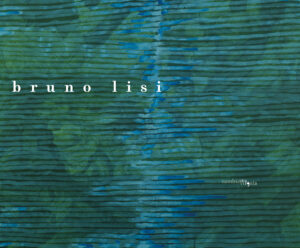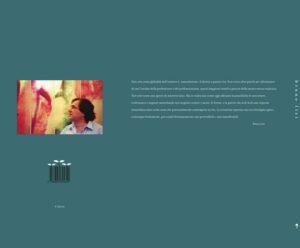
The exhibits offer an opportunity to be seized in a tough time, like the one in which we are living. The confinement, the circumstance of subsequent conditioning, and the mutation of the rituals of the art world have brought a singular appreciation of the system, with a hunger for art projects which can reach people, offering them new interpretations from a dynamic perspective, and a rigor and awareness that restore a freshness to the mechanism. As Claire Bishop1 clearly explained in her essay on radical spectacularization in museums, the latter are ever more intent on taking and disseminating images, in-depth analyses, and interviews. We are at a critical point for how museums think about themselves and enter into the fabric of communication. It is increasingly necessary to be part of the enjoyment as producer and actor in the staging and as the primary cultural subject and object. There is a new present to build in which the contemporary becomes a supporting structure, able to influence and reach people. It is an apperception of reality in the making in which every challenge becomes the great challenge to overcome.
From this perspective, Bruno Lisi’s exhibit becomes an opportunity to dialogue with the antique art, to reintroduce us to the most prolific decades, between the 70s and 80s, of Italy’s capital city.
This period is established as one in which art in Rome became the construction of the myth; an opportunity for the retrospective that celebrates an artist in his chimeric practice, whose elements of pictorial process are considered and discussed.
In time, the light characterized Lisi’s research in nonlinear permutations, notable for both their presence and absence. The urgent luminosity
has migrated in his ample practice. His paintings possess a newfound clarity and purity of color, as well as in his drawings which are imperceptibly nuanced in color, reminiscent of the fact that sight is a corporeal phenomenon in which the eyes register palpable energy. These prismatic effects, evanescent, are nevertheless compensated for by the transition rendered in earthy registers that give weight to the most luminous colors, giving the impression that they grew organically from the metaphorical “land” of the chromatic spectrum.
In his long and productive research, he worked exclusively with colors provided by light. The light revealed in the color without playing with color2 transmits an ethereal state within the space, elevating their interactions.
The research started in the 70s was recuperated in the following decade in which Lisi makes use of a precise and circumscribed iconography in which various vertical strips of light intertwine at the center of the painting,3 intersecting and branching out in as many luminous rays.
As in all of his works, the Metacrilati are the result of a multiform process that started outside of the studio, but they reach their most intense stages within it. The artist drafts pools of pigments and mediums that in turn become places for the creation of expressive signs, traces, and sediments. He circles around his works, moving around them as required by the evolving compositions, setting himself between the visual rhythms and their textures in incredibly real terms.
The painting, like the Tiber river and the forest that surrounds the Roman countryside, offers infinite opportunities for immersion in the warm light enveloping the city.
As visual and metaphysical focal points, the Metacrilati are immersive and enigmatic objects focused on presentation. The ability to take advantage of natural energies is translated with peculiar stretches of light and color that respond to a multitude of factors in real time: environmental conditions in the visual space, the position of the viewer’s body, the psychological qualities and the philosophical considerations that are inseparable from perception itself.
The artist always moved in a state of consciousness in which an innate spirituality was sharpened by a robust rationality. In this intellectual magma he increased, in the late 1980s, the range of his color combinations and applied the visual textures to his procedural rigor. He utilized an even more diversified tonal range and created combinations and intensities that he planned and sharpened to make hypotheses about energy and color, which informed his artistic career from the beginning.
Every work in the series represents a concentrated expression of formal and intellectual clarity in the midst of the expanding complexity of the cosmos.
This idyllic state is elevated and integrated by the interaction with the permanent collection in the Museo dell’Arte Classica, revealing its temporal dimension, esthetically assimilable and malleable in the intertwining of the dynamics between artworks from different time periods.
The exhibit includes a group of unreleased free canvases, Segno (1994-1997), Gesto (2000-2001), and Segno aperto (2003-2005) hung between the walls, forming an ethereal installation composed with cables strung on the sides of the museum walls. By altering the usual narrative, viewers immerse themselves in the visual encounter in an ephemeral and ineffable combination.
As synaesthetic fields of shape and color, the canvases are described in tactile and emotive terms that escape all rational logic and are unique to every viewer. Since their formal attributes function as visual hooks, the eye is attracted in the atmospheric spaces of their compositions before encountering an apparently unlimited number of associative openings. The worlds take shape rapidly through their various surfaces, disappearing again in the same manner exactly when the act of seeing generates an optical overload or a disruptive dissonance. The accumulation of Lisi’s signs reveal recognizable traces of planning and elaborate negotiations with the material, transporting the viewer towards the concrete reality of the pigment, of the medium, and of the surface. In this cathartic state, the artist makes space for both precision and abandon, inviting the viewers to participate in processes of controlled creation and project themselves in this state of contemplation.
Together, the art in the exhibit fall into a body of work capable of exploring new chromatic relations and the most ample range of transparencies, signs, and luminosity. As in all types of research with a vast reach, the dimensions, the form, and the source material encourage interaction between a primary abstract form and its human subject.
On this chosen state, Lisi has projected that magical creative moment within the conscious.
The Contemplative Edge: Cosmologies
The parallel section of events which creates a dialogue with the works of Bruno Lisi, in the immersive atmosphere of the Museum of Classical
Art, takes its cue from the new world about to come, whose discomforting signs can be perceived in the various crises that we are witnessing: from those related to labor, to migrations, to the pandemic, and ecology, announcing the inevitable demise impelled by capitalistic exploitations of humans and the natural environment.
It is imperative that we first rediscover what we haveneglected to pay attention to the priceless and crucial act of thinking of a new society, seeing humans as an inherent part of nature in this context of re-discovery of our art history. The artists involved in this section reflect on these topics, exploring the notion of contamination in the broader and conceptual sense.
Repetition, gestures, flashes, latent imprints, in the work by Mathew Emmett, read the psychological significance and form an immersive film installation; while in the work of Greig Burgoyne the performers will create a dialogue, through gestures and actions, with the statues of the museum.
In this majestic context of the Polo museale Sapienza, we encouraged artists to depict the tenuous relationships between artist and audience, body and canvas, the symbolic and the physical. We want to share the artists’ message to empower, to give extreme concentration and inspire others in this period of precarious balances.
